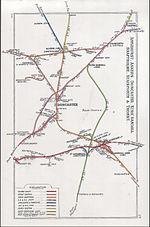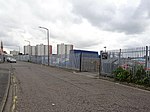Doncaster railway station
Buildings and structures completed in 1938DfT Category B stationsFormer Great Northern Railway stationsGrade II listed buildings in South YorkshireGrade II listed railway stations ... and 14 more
Incomplete lists from August 2017Northern franchise railway stationsPages with no open date in Infobox stationRailway stations in DoncasterRailway stations in Great Britain closed in 1850Railway stations in Great Britain opened in 1848Railway stations in Great Britain opened in 1850Railway stations served by CrossCountryRailway stations served by East Midlands RailwayRailway stations served by Grand Central RailwayRailway stations served by Hull TrainsRailway stations served by London North Eastern RailwayRailway stations served by TransPennine ExpressUse British English from December 2017

Doncaster railway station is on the East Coast Main Line serving the city of Doncaster, South Yorkshire, England. It is 155 miles 77 chains (251 km) down the line from London King's Cross and is situated between Retford and York on the main line. It is managed by London North Eastern Railway. It is a major passenger interchange between the main line, Cross Country Route and local services running across the North of England. It is also the point for which London North Eastern Railway services branching off to Leeds diverge from the main route continuing north towards Edinburgh.
Excerpt from the Wikipedia article Doncaster railway station (License: CC BY-SA 3.0, Authors, Images).Doncaster railway station
Food Mall, Doncaster Hexthorpe
Geographical coordinates (GPS) Address Nearby Places Show on map
Geographical coordinates (GPS)
| Latitude | Longitude |
|---|---|
| N 53.5225 ° | E -1.1395 ° |
Address
1
Food Mall
DN1 1LB Doncaster, Hexthorpe
England, United Kingdom
Open on Google Maps









